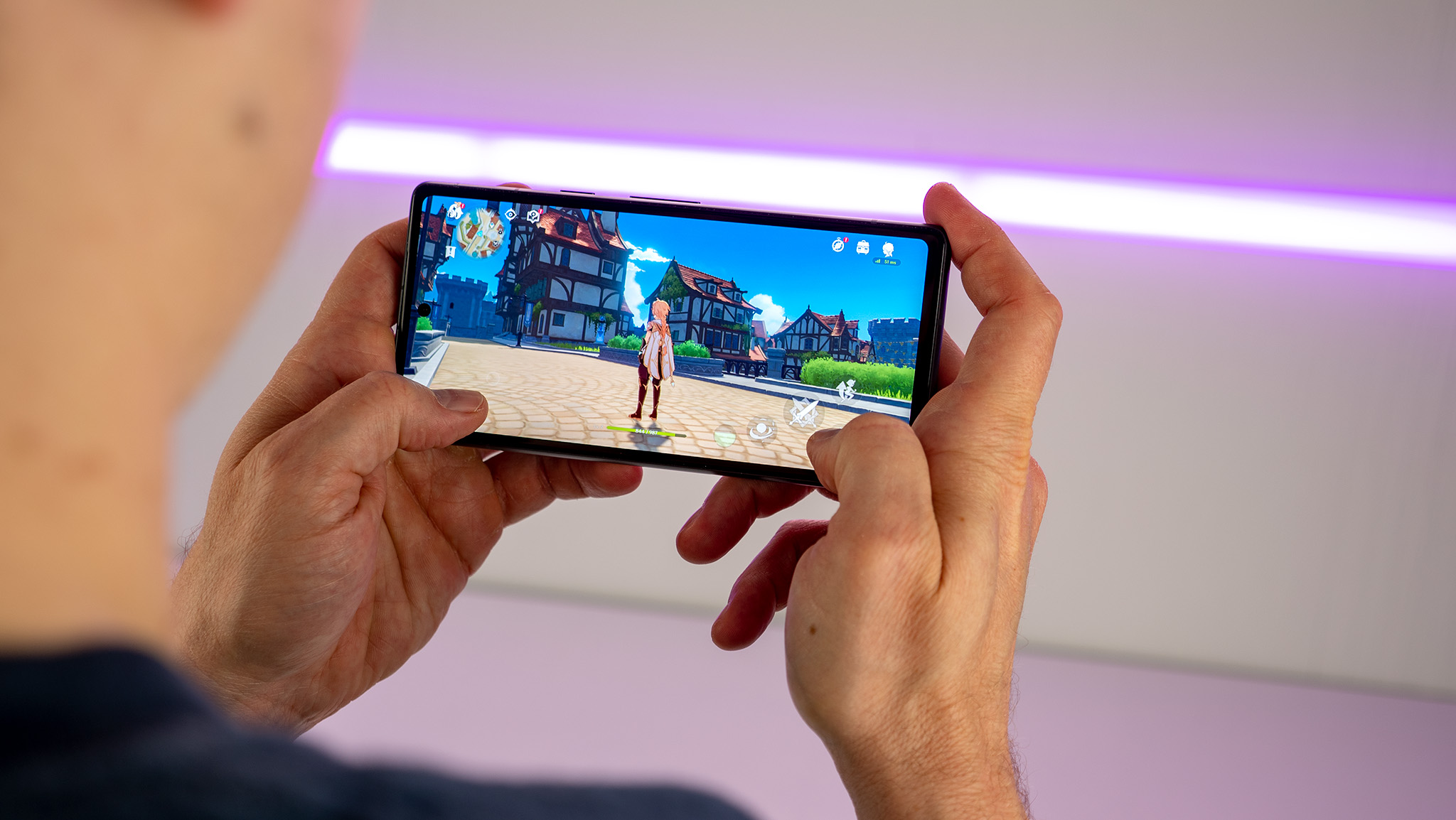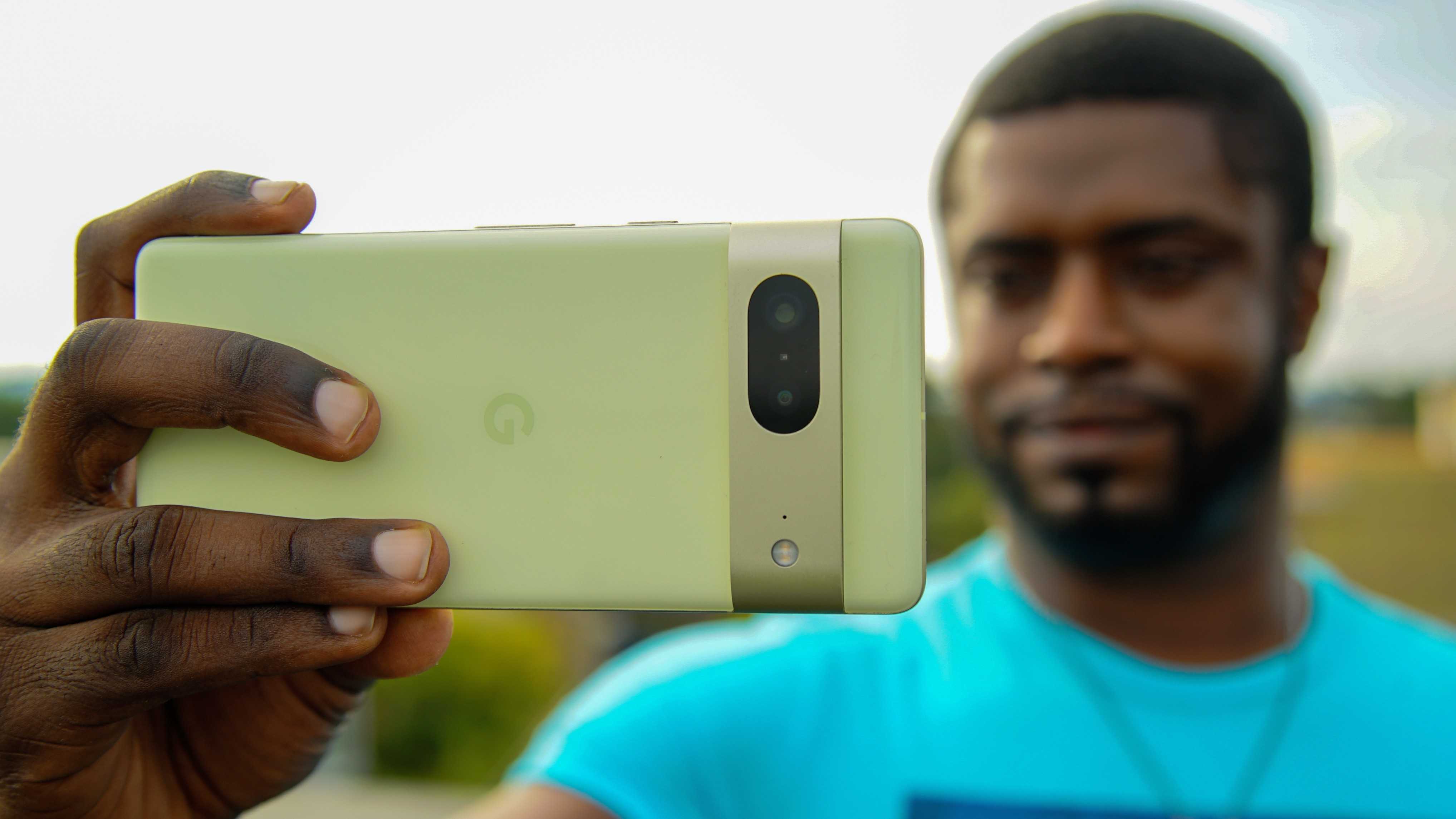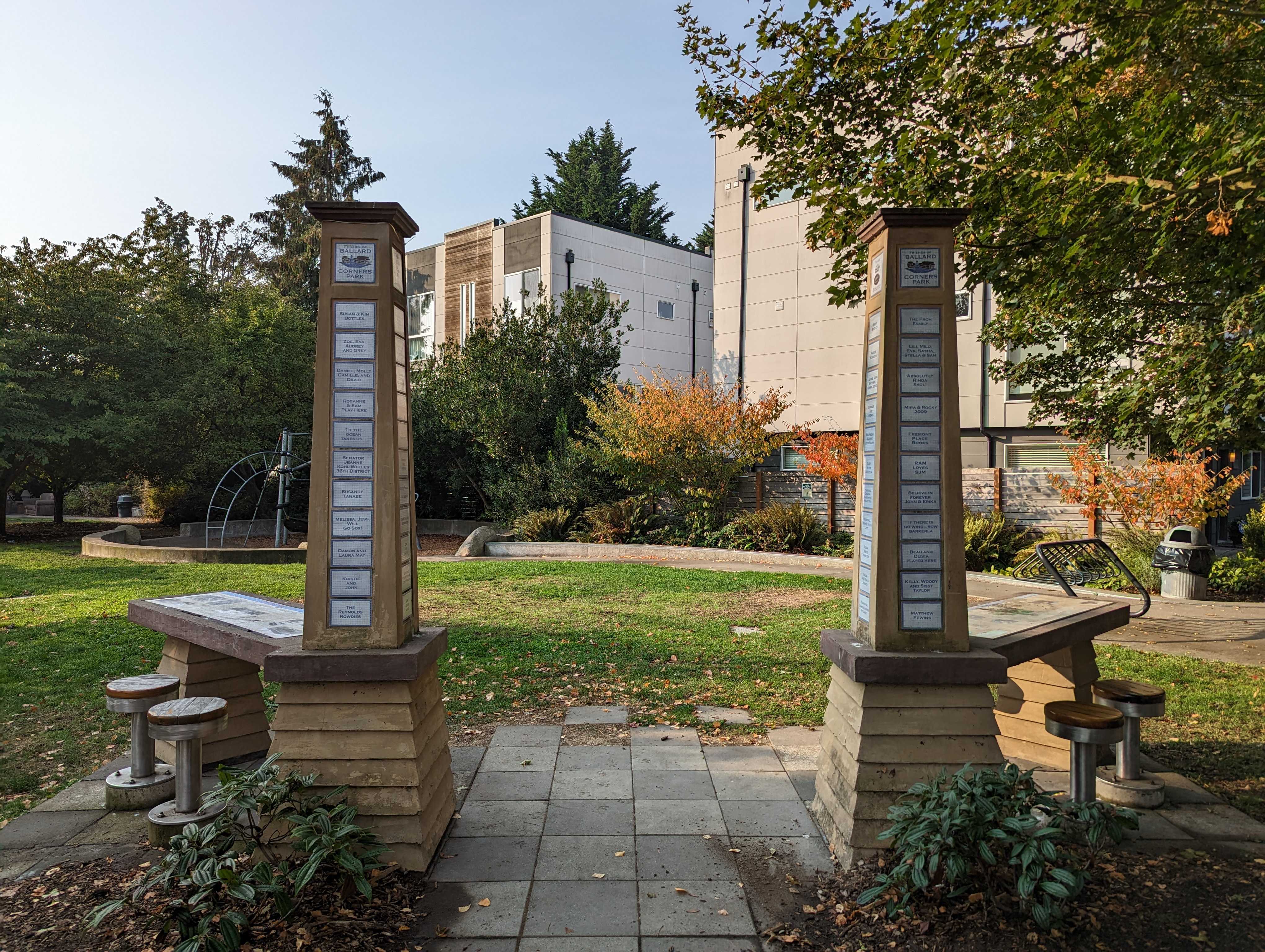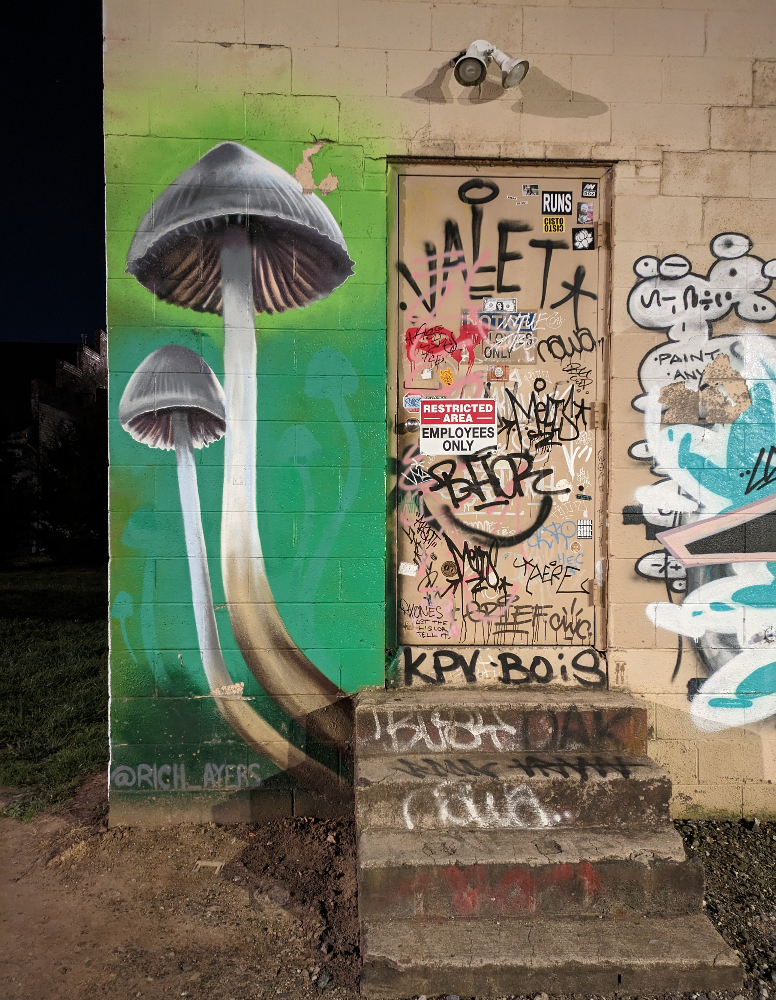Google Pixel 7a vs. 7: A lot closer than you think
Google's affordable Pixel lineup is catching up.

Affordable, but not cheap
Don't be fooled by the name, as the new Google Pixel 7a packs quite a punch thanks to the Tensor G2 chipset powering it. With a 90Hz AMOLED display, 64MP camera, and wireless charging, you're getting a near-flagship experience for about half the price of one. And like a flagship, you'll get cool AI features, years of OS upgrades, and even more software support.
Pros
- Beautiful colorways
- Excellent camera performance
- 8GB of RAM
- Very good value
- Slightly more pocketable
- Wireless charging
Cons
- Smaller camera sensor
- Only one storage size
- Very slow wireless charging speed
- Plastic back is a dust magnet

The affordable flagship
Google doesn't want to burden you with an expensive phone. The Pixel 7 is enough flagship for many without having to take out a second mortgage. Plus, you're getting years of software support and multiple OS upgrades, meaning you won't have to worry about getting a new phone for a while.
Pros
- Smooth, gorgeous build
- Great cameras
- Long software support
- Faster charging speeds
- 256GB option
- Gorilla Glass Victus
Cons
- Unappealing colors
- More expensive for nearly the same specs
- Only 90Hz display
Google just launched the new Pixel 7a at I/O, and it may be the company's best A-series phone ever. It takes everything we love about the Pixel 6a and delivers something even better while keeping the price tag relatively small and still squarely mid-range. However, with the slight price bump from last year's 6a, the Pixel 7a inches closer to the Pixel 7, meaning you have a difficult choice ahead of you.
Do you go for the more "affordable" A-series phone with a flagship processor, respectable camera system, and plastic design, or do you fork over the extra $100 for a glass and aluminum chassis, faster wireless charging, and larger display? It all comes down to what's important to you, but hopefully, we can help you decide.
Google Pixel 7a vs. 7: Design

With the Pixel 7, Google didn't stray very far from the unique design language introduced with the Pixel 6 series. That design also trickled down to the Pixel 6a and Pixel 7a, making them nearly identical to their flagship counterparts. At first glance, the Pixel 7a and Pixel 7 look about the same, save for the smaller camera visor on the back that doesn't protrude outward quite as much. This makes the Pixel 7a look much slimmer than the 7, and it'll sit much flatter on a surface.
That said, the 7a is a hair thicker than the Pixel 7, but it probably won't be very noticeable. What will be noticeable, however, is the smaller chassis of the 7a. The display sits at 6.1 inches, compared to the 6.3-inch panel on the 7, and the bezels between the two are about the same, maybe a touch thicker on the 7a. This display size is a popular one among small Android phones such as the Galaxy S23. It’s perfectly pocketable yet still large enough for content consumption.


One major difference between the 7a and 7 is in the materials used to build the phones. The Pixel 7 is built using Gorilla Glass Victus on the front and back and an aluminum frame, which makes for a much more premium feel. The Pixel 7 feels incredibly smooth no matter how you hold it, to the point where you want to leave your Pixel 7 case off.
On the other hand, the 7a has a plastic back and Gorilla Glass 3 on the front. While this could be seen as a negative, the 3D thermoformed composite back doesn’t feel cheap at all, to the point where we had to make sure it was actually plastic and not glass. And on the plus side, it’ll be less likely to crack if you drop it.
One problem with the plastic back, however, is how dusty it gets while also being a fingerprint magnet, so we'd probably recommend you leave your Pixel 7a case on the phone. The Pixel 7 also gets a little dusty, but it mainly just collects on the camera visor.
Get the latest news from Android Central, your trusted companion in the world of Android


Both phones come in a few different colors, although we happen to like the Pixel 7a colors more. The Sea colorway is a very attractive blue, while the Google-exclusive Coral takes us back to the Pixel 4 days. The Pixel 7 has a Lemongrass, which is okay, but it's not nearly as interesting as the 7a's new hues. Of course, black and white are there if you prefer to go the more subtle route.
Google Pixel 7a vs. 7: Specs

These phones aren't just similar on the outside, but their specs also make them hard to tell apart. As a flagship, the Pixel 7 isn't exactly a powerhouse. The Tensor G2 chipset is impressive, and the 8GB of RAM does the job, but you're still getting some fairly mid-range specs with the 90Hz refresh rate display, dual camera setup, and 20W charging. This is what makes it so hard to compare these phones because, spec-wise, they're very similar.
Google ups the RAM on the Pixel 7a from 6GB on its predecessor to 8GB. This matches the base models of many of the best Android phones today. The display refresh rate has also been increased to 90Hz, which may still fall short of even many cheap Android phones, but it matches the base Pixel flagship models of the last couple of years.
Wired charging is also slightly lower than the Pixel 7 at 18W, and while the 7a does get wireless charging, it's pretty limited at just 5W, so you'll likely not rely on this. Meanwhile, the Pixel 7 can charge up to 20W using the Pixel Stand, meaning either wired or wireless will top you up in roughly the same amount of time.
| Category | Google Pixel 7a | Pixel 7 |
|---|---|---|
| Chipset | Google Tensor G2 | Google Tensor G2 |
| Memory | 8GB LPDDR5 RAM | 8GB LPDDR5 RAM |
| Storage | 128GB UFS 3.1 | 128GB, 256GB UFS 3.1 |
| Display | 6.1-inch AMOLED, 2400x1080 (429 ppi), 90Hz, HDR10+, Gorilla Glass 3 | 6.4-inch AMOLED, 2400x1080 (416 ppi), 90Hz, HDR10+, Gorilla Glass Victus |
| Battery | 4385mAh, 18W wired, 5W wireless | 4355mAh, 20W wired, 20W wireless |
| Dimensions | 152mm x 72.9mm x 9.0mm | 155.6 x 73.2 x 8.7mm |
| Weight | 193.5 grams | 197g |
| Water and dust resistance | IP67 | IP68 |
| Security | Titan M2 Security Chip, VPN by Google One, In-screen fingerprint sensor | Titan M2 Security Chip, VPN by Google One, In-screen fingerprint sensor |
| Colors | Charcoal, Sea, Snow, Coral | Obsidian, Snow, Lemongrass |
| OS | Android 13 | Android 13 |
| Update guarantee | Five years of Pixel updates | Five years of Pixel updates |
Both phones are powered by the Tensor G2 chipset, which has proven quite impressive in our use, although don't expect the best gaming experience. The 7a battery is slightly larger, but both phones should be able to get you through a whole day of use before charging, but you might want to turn off some features first, such as Face Unlock.
Overall, these phones are very similar on the inside. That said if you're someone who prefers to have more storage, the Pixel 7 might be the phone for you as you get the option for 256GB.
Google Pixel 7a vs. 7: Cameras

When it comes to the cameras, it's not hard for Google to get this right. Pixel cameras are among the best of the best, no matter what sensor Google uses. Last year's Pixel 6a launched with a 12MP sensor, which was still capable of some pretty impressive images. Meanwhile, the 7a has more than 5x the resolution at 64MP, already higher than the 50MP primary camera on the Pixel 7.
| Cameras | Google Pixel 7a | Pixel 7 |
|---|---|---|
| Rear Camera 1 | 64MP, 1/1.73", ƒ/1.89, 0.8μm, OIS, 4K 30/60FPS | 50MP, 1/1.31", ƒ/1.85, 1.2μm, OIS, 4K 30/60FPS, |
| Rear Camera 2 | 13MP, ƒ/2.2, 1.12μm, 120°, OIS | 12MP, ƒ/2.2, 1.25μm, 114°, OIS |
| Front Camera | 13MP, ƒ/2.2, 1.12μm, 95°, 4K 30FPS | 10.8MP, ƒ/2.2, 1.22μm, 92.8°, 4K 30/60FPS |
Numbers aren't everything, of course. What matters is how you use those Pixels, and with the Pixel 7, Google has proven that it can make pretty good use of its Pixels. Images come out crisp, nicely contrasted, and with plenty of depth.
The Pixel 7a's primary sensor may be physically smaller than the Pixel 7's, but in our testing, it has been able to hold its own against even the Pixel 7 Pro. The only complaints have to do with the slightly off-white balance and the lack of a telephoto lens, which is a fault of the Pixel 7. Digital zoom works okay, but you can only get so far before even Google's AI begins to falter.




Most Pixel 7 features can be found on the 7a since both share the same chip. That includes Cinematic Blur, Real Tone, and a host of other AI tools to enhance your images. However, the 7a does appear to lack some features like Motion Mode. The front-facing camera is also incapable of 4K 60FPS video capture.
Either way, it's very unlikely you'll be disappointed by either camera, as Google makes up with software what it lacks in hardware.
Google Pixel 7a vs. 7: Which should you buy?

With Google's A-series phones, you tend to get a lot of bang for your buck. The company has definitely upped its game with the 7a by giving users much of what they want for less. The Pixel 6a has quite a few trade-offs made in order to get the price down, but you won't really find that here.
Then, there's the Pixel 7, which is no doubt a spectacular phone, especially for one of the more affordable flagships out there. It's got a great set of cameras, a gorgeous design, a fast chipset, and tons of cool AI features. There's not much to like.
However, a lot of that also applies to the Pixel 7a. On the inside and outside, these are almost the same phone, minus some very minor compromises with the new 7a. Looking at the designs makes it obvious, but a glance at the specs makes it even more obvious. Because of this, and with only a $100 price difference between them, it makes it very hard to recommend the Pixel 7 over the 7a.

Pixel 7, who?
Google's latest A-series smartphone is its best yet, offering much of what you can get from the Pixel 7 but for much less. Not to mention, you get a couple of gorgeous colorways to really make sure your phone stands out in a crowd.

A good phone at a good price
The Pixel 7 is one of the best phones you can buy right now. With the Tensor G2 chipset under the hood, the phone is capable of some pretty impressive AI magic that would impress a lot of people. Photo quality is also excellent, sometimes rivaling a DSLR.

Derrek is the managing editor of Android Central, helping to guide the site's editorial content and direction to reach and resonate with readers, old and new, who are just as passionate about tech as we are. He's been obsessed with mobile technology since he was 12, when he discovered the Nokia N90, and his love of flip phones and new form factors continues to this day. As a fitness enthusiast, he has always been curious about the intersection of tech and fitness. When he's not working, he's probably working out.
